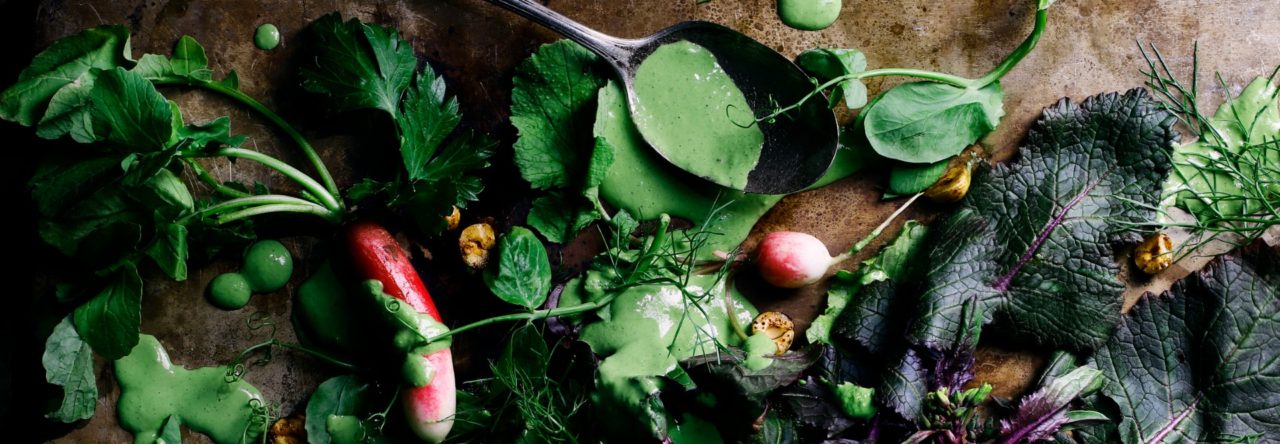Singapore Stir Fried Veggie Noodles
Serves 2 to 3
Spicy, rich and flavorful, this is a speedy twist from the Malaysian restaurant classic in the vein of “dry” style fried noodles with an extra helping of chiles and abundant crunchy vegetables. For milder noodles omit the chile garlic sauce, but keep the tobanjan sauce; after you’ve made the Mapo tofu, this fermented chile bean sauce gracefully stands in for traditional Malaysian fermented bean paste.
Like any stir fry, this beautifully absorbs any stray vegetables in need of using: broccoli, snow peas, bell peppers, Asian greens, ribbons of kale. Make sure to dice or slice these vegetables into thin bite sized pieces; if using thick, heavy vegetables like cauliflower or broccoli, slice very thin and sauté separately for a few minutes until tender, then add along with the noodles toward the end.
Stir fry
12 ounces vermicelli-style rice noodles
2 tablespoons canola oil
8 ounces fried Chinese tofu, baked pressed tofu or 1 recipe Baked Basic Tofu, sliced into ½ thick cubes
1/2 pound green beans or long beans, sliced into 3 inch pieces
1 tablespoon minced ginger
4 cloves garlic, minced
2 shallots, peeled and thinly sliced
6 scallions, green tops only, sliced into ½ inch pieces or ¼ pound garlic chives
3 cups thinly shredded green, Napa or Savoy cabbage
1/2 pound mung bean sprouts, optional
1 cup cilantro, roughly chopped
Sauce
¼ heaping cup tobanjan garlic bean sauce
2 tablespoons soy sauce (preferably thin Chinese or Thai soy sauce)
2 tablespoons sugar or agave nectar
4 teaspoons Asian chile garlic sauce (such as sriracha)
1 teaspoon ground turmeric
1/2 cup vegetable broth
Optional garnish:
1/2 cup roasted peanuts, finely ground
1. Cook the noodles according to package direction, slightly undercooking them by 1 to 2 minutes to keep the noodles firm during the frying process. Rinse with plenty of cold water, drain well and set aside. While the noodles are boiling, chop and set aside all the remaining ingredients.
2. In a small liquid measuring cup or mug whisk together the sauce ingredients. Preheat a wok over high heat, then pour in 1 teaspoon of oil.
3. Add the tofu and stir fry for 2 minutes or until the edges are golden brown, then transfer to a plate. Add another teaspoon of oil, add the green beans and stir fry for about 2 minutes until crisp tender, then transfer to the plate. Heat another teaspoon of oil, stir fry the cabbage until crisp tender, about 2 to 2 ½ minutes, and transfer to the plate with the other veggies.
4. For best result, stir fry two batches of noodles instead of one big batch; divide the remaining oil, ginger, garlic, shallots, and scallions in half.
5. Add one half of the oil to the hot wok and stir in the garlic and ginger. Stir fry for 15 seconds, then add the shallots and white parts of scallions. Stir fry for 1 minute or until the shallots are soft. Add half of the fried tofu, green beans, and cabbage and stir fry another 2 minutes. Add half of the noodles, bean sprouts, green tops of scallions, and pour on half of the sauce. Vigorously stir fry, using tongs to lift up and toss the noodles to coat in sauce for 3 to 5 minutes or until the noodles are hot and bright yellow from the turmeric. Add half of the cilantro and stir for 1 more minute. Taste and season with more soy sauce, as needed.
6. Transfer to a serving dish and sprinkle with some peanuts. Make another serving with remaining ingredients. Serve it hot!








